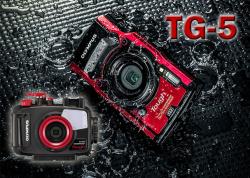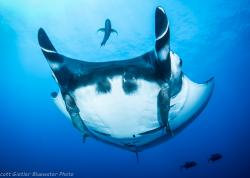Olympus XZ-1 review
The Olympus XZ-1 is clearly a winner in the class of high-end compact cameras, with very few negative aspects. It's excellent F1.8-2.5 lens makes it stand out about the small crowd of competitors. I've been using this camera for several days, and wanted to share my personal thoughts. Here's the Olympus XZ-1 review.
Olympus XZ-1 quick specs:
Sensor size: 1/1.63 CCD, 10 megapixels, 3648x2739 (4:3). Same equivalent sensor size as Canon S95/G12
Focal length: 28mm-112mm
F1.8 - F2.5 aperture Zuiko lens
Full manual controls, RAW
11 auto-focus points, with moveable focus point
shoots in RAW or JPEG at 2fps
Built in image stabilization
1280x720 HD video, 30 fps, AVI motion jpeg, auto-focuses in video mode
ISO 100-6400, 3 inch LCD with 610,000 dot resolution
max shutter speed 1/2000th
Has an internal flash and hot shoe, allowing control of remote strobes
Built-in 3 stop ND grad filter
Long exposures, up to 60 seconds
Lithium ion battery, good for 325 shots without flash

Build quality & handling: Excellent. Unlike other compacts, this camera was simple to figure out how it use it in seconds. Small is size, it is closer in size to the Canon S95 than the Canon G12. Controls are very similar to the S95, except the body is slightly larger and has a dedicated video button. The camera is very comfortable to hold and use, and very intuitive. The body is a combination of aluminum and plastic.
Zuiko F1.8-2.5 lens - superb. This lens is F2.5 when fully zoomed in. Most other compact camera lenses are F5.6 when fully zoomed in. This lens is the highlight of the camera, and is in my opinion a better lens than the 14-42mm kit lens that comes with the Olympus E-Pl2. The large maximum aperture offers some depth of field control, a first for a compact camera. This is the first F1.8 camera from Olympus since the C5050Z, and the first lens to have the Zuiko brand on it. Shooting at 112mm, at F2.5 will actually allow you to slightly blur the background -see the photos below.


Top photo taken with the Olympus XZ-1 at F2.5, 1/40th at 112mm (fully zoomed in). Bottom photo taken at F5.6, 1/10th. Most compact cameras will shoot at F5.6 at a 112mm focal length. As you can see, the background is somewhat blurred in the first photo - and you can shoot at much faster shutter speeds than at F5.6. Keep in mind that 112mm is not exactly a long zoom, you won't be shooting small birds with it.
Startup time: almost instant
Control dial: A front contol dial changes either the aperture or shutter speed in aperture or shutter priority mode. In manual mode, the rear control dial changes shutter speed.
Menus: easy and intuitive to use. However - some functionality, like setting macro for example, takes more button presses than on other cameras.
Focusing speed: consistently good, not as quick as the E-PL2 but a little faster and more consistent than most other compacts
Image quality: Great, comparable to other high-end compacts

This outdoor photo from the Olympus XZ-1 is a 100% crop of the above photo. F4, 1/500th, ISO 100, zoomed in to 35mm. Detail looks great!
Internal flash: Good, even coverage that lights an entire room without a problem.
Olympus XZ-1 Video performance: The Olympus XZ-1 does 720/30p Motion JPEG AVI video. Clip lengths are limited to 7 minutes. This camera has a nice one-touch video button, which means you don't have to change modes to do video. Also, it auto-focuses in video mode, unlike many other compacts. The auto-focus is slow, but it does work. Large exposure changes are dealt with quickly. Zooming is slow, like in other compacts. Overall, a thumbs up!
Macro & Supermacro functionality: Fair in macro mode. In supermacro mode, the camera can focus right on the lens port. However, the camera is stuck at 28mm focal length, which limits the effectiveness of supermacro due to the tiny working distance. Also, the flash will not fire in supermacro mode. In macro mode, the camera will take a photo 4.25 inches wide at 28mm, 3.75 inches wide at 112mm. In supemacro mode, because of the short working distance, taking a photo less than 1.5 inches wide is quite difficult. At these distances, you will also lose 1-2 stops of light.

Shooting supermacro at an angle. Here I am too close to the subject.
High ISO performance: photos are great up to ISO 400, good at ISO 800, and quite useable at ISO 1600. At 100% crop, you can notice loss of detail at ISO 800 due to the built-in noise reduction. At ISO 1600, you can notice the loss of detail when viewing the photo full screen. ISO 3200 shows significant noise. This performance is comparable to other higher-end compact cameras. However, the ultra-fast F1.8/F2.5 lens means that a lower ISO is needed than other compact cameras.

XZ-1 photo, hair of one of Raphael Sanzio's angels. ISO 100, 100% crop

XZ-1 photo,ISO 400

XZ-1 photo,ISO 800

XZ-1 photo,ISO 1600

XZ-1 photo,ISO 3200
Overall comments: The Olympus XZ-1 has all the features you would expect in a high-end compact - scene modes, art modes, high-speed USB interface, RAW file format, AF illuminator light, full manual controls. The one-touch video capability, USB charging, auto-focus tracking mode and the 3-stop neutral-density filter are nice touches. The ND filter means that the shallower depth of field of F1.8 can be used in brighter light. An optional electronic viewfinder, microphone, or macro light can be added via an accessory port - basically any accessory the E-PL2 can take. It also has custom modes.
Cons to the Olympus XZ-1: Macro capability not great, unless you are using supermacro mode, which is stuck at 28mm & no internal flash. Use macro mode and a diopter to get around this.
The rear control wheel is a little clunky and takes some getting used to. In manual mode, the LCD is dark when the settings are underexposed, like when using an external strobe for underwater photography. I prefer an LCD to always be bright.
Other very minor cons that don't bother me but I should mention- the camera has no dedicated ISO dial, no noise reduction settings, no ability to customize controls (although it does have custom modes), no highlights flashing in the image playback, no AEL/AFL button (you can press the shutter halfway and recompose), no grip, and no 24fps video (only 30fps).
Olympus XZ-1 versus Canon S95: The image sensor, video capability, high ISO noise, and control dials are comparable. If you don't consider the supermacro mode, the macro on the XZ-1 is not as good as the macro on the S95. The F1.8-2.5 lens of the Olympus XZ-1 is much better, and the moveable focus points is nice. At 112mm, the XZ-1 is almost 2 stops brighter than the Canon S95. The fact that supermacro won't fire the flash means a strobe can't be fired via fiber optics, a drawback.
The XZ-1 consistently focused and took the shot slightly faster than the S95 in my low-light tests, at all ranges. But remember - it's still at compact speed, not "dSLR" instant. The internal flash of the XZ-1 has wider, more consistent coverage than the S95 internal flash. For live view, I prefered the LCD screen of the S95, I thought it showed better color and more detail. The Canon S95 does not have a hot shoe for external flashes. The XZ-1 is bigger and more expensive. The mode dial is much easier to turn on the XZ-1, and the video on the XZ-1 autofocuses (it does not on the S95), and responds to exposure changes more quickly.
Looking carefully at DPReview's image tests, the XZ-1 to me looks slightly sharper than the S95, with a little bit more detail, but a little noisier at higher ISO's.
Compared to the Olympus E-Pl2: The XZ-1 clearly has a better lens (than the 14-42mm kit lens), allowing you to use faster shutter speeds and having a longer zoom range. The E-PL2 has much better high-ISO performance, and a much larger sensor, which will correspond to less noise and greater dynamic range. You can change the lenses of the E-PL2, which can be a benefit (more lenses), or a drawback (more money).
I think the macro capability of the E-PL2 lens is a little better, being able to take a photo 2.8 inches wide at 42mm (84mm equivalent), with use of the internal flash. In my "focus shootoff" tests, the E-PL2 focused slightly faster than than the XZ-1 all the time, although the XZ-1 was never too far behind. The XZ-1 LCD seems to be sharper with more color and contrast.
Other competitors: Panasonic LX5, Samsung EX1.
Implications for underwater photography with the XZ-1:
This camera is sure to be popular in underwater photography, with a sharp, fast-focusing lens, full manual controls, raw, the ability to slightly blur the background, and an excellent image quality. TTL in full manual mode is supported, unlike the Canon S95 or G12.
Cons include poor macro performance in normal macro mode, a supermacro mode that does not support zooming or use of the internal flash, and an LCD screen that is a little dark when the manual settings underexposure the image. Keep in mind that for supermacro mode, you can't fire strobes via a fiber optic cable. However, I don't consider this a huge issue, because you can simply shoot in regular macro mode, and use a 67mm threaded diopter on the housing, which will allow for closer focusing and more magnification. Also - on the plus side, the Olympus underwater housing will support the control dials.
Wet Lens support:
For good macro, this camera will benefit from one or two strong diopters, such as the Dyron 67mm dual-element diopter.
The fact that this camera has a similar zoom range to the Canon S95 implies there is very good chance wide-angle lenses, such as ones made by Dyron and Inon, will be supported, depending on how the housing is built. The lens travel distance on the camera is fairly short. The PT-050 underwater housing does have a 67mm threaded port for wet lenses. I've been told the housing supports both control wheels, but I haven't yet got my hands on the housing.
If the underwater housings do not support a fisheye lens, then the Canon S95 + Recsea housing will most likely still hold the edge for preferred underwater compact camera setup.
XZ-1 Underwater modes
The XZ-1 has 2 underwater scene modes, and one underwater white-balance mode. These modes appear to have no effect on settings or white balance, so I'm not sure what they do. I'll do some further testing though.
A close look at the Olympus PT-050 underwater housing
Where to purchase the Olympus XZ-1 & PT-050 housing:
The camera can be purchased for just $439 from our sister site Bluewater Photo & Video, with free shipping. They also carry the housing, macro and wide-angle wet lenses.
Check out the Ikelite underwater housing for the XZ-1
Further Reading
RECOMMENDED ARTICLES
SUPPORT THE UNDERWATER PHOTOGRAPHY GUIDE:
The Best Service & Prices on u/w Photo Gear
 Visit Bluewater Photo & Video for all your underwater photography and video gear. Click, or call the team at (310) 633-5052 for expert advice!
Visit Bluewater Photo & Video for all your underwater photography and video gear. Click, or call the team at (310) 633-5052 for expert advice!
The Best Pricing, Service & Expert Advice to Book your Dive Trips
 Bluewater Travel is your full-service scuba travel agency. Let our expert advisers plan and book your next dive vacation. Run by divers, for divers.
Bluewater Travel is your full-service scuba travel agency. Let our expert advisers plan and book your next dive vacation. Run by divers, for divers.




































